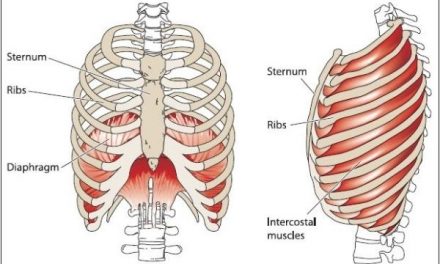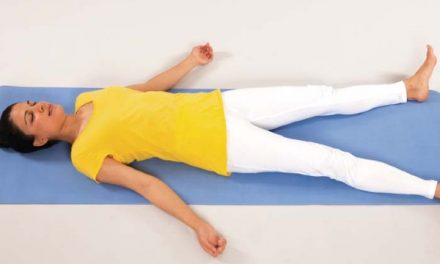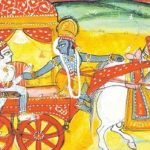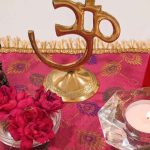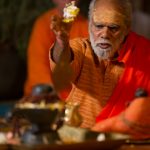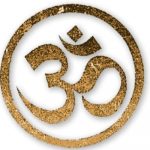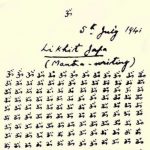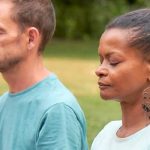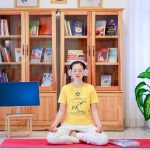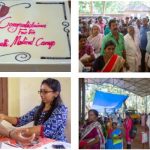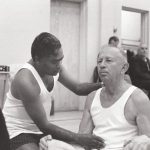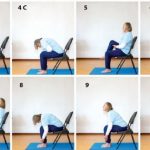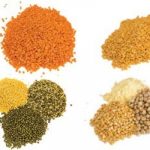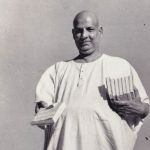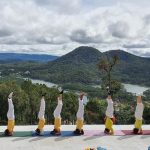Swami Sivananda gives us some very practical advice with the practice of Pranayama, that can be easily be incorporated into daily life and will help a great deal to improve our general stamina, relax our nervous system and increase our power of concentration.
The Master then reveals the possibility of healing through the control of Prana, even from a distance. Although he did not publicly acknowledge having these powers, many disciples have recounted several examples of him healing his devotees from all sorts of health problems and illnesses, oftentimes by mere closing his eyes and using his will power.
This also highlights two trademarks of Swami Sivananda’s writings. The first is the fact that he only recommends practice of which he has a first-hand experience. The second is that he makes all spiritual advice and recommendations, even of the highest order, readily available to all.
Pranayama
While Walking Walk with head up, shoulders back and with chest expanded. Inhale slowly through both nostrils counting OM mentally 3 times, one count for each step. Then retain the breath till you count 12 OMs. Then exhale slowly though both nostrils till you count 6 OMs. Take the respiratory pass or rest after one Pranayama counting 12 OMs. If you find it difficult to count OM with each step, count OM without having any concern with the steps.
Kaphalabhati can also be done during walking. Those who are very busy, can practise the above Pranayama during their morning and evening walks. It is like killing two birds with one stone. You will find it very pleasant to practise Pranayama while walking in an open place, when a delightful gentle breeze is blowing. You will be invigorated and innervated quickly to a considerable degree. Practise, feel and realize the marked, beneficial influence of this kind of Pranayama. Those who walk briskly, repeating OM mentally or verbally, do practise natural Pranayama without any effort.
Pranayama During Meditation
If you do concentration and meditation, Pranayama comes by itself. The breath becomes slower and slower. You will practise this Pranayama daily unconsciously. When you are reading a sensational story-book or when you are solving a mathematical problem, your mind is really very much absorbed in the subject-matter. If you closely watch your breath on these occasions, you will find that the breath has become very, very slow. When
you see a tragic story being enacted in the theatre or a film-show, when you hear very sad striking news or some glad tidings, when you shed tears either of joy or sorrow, or burst into laughter, the breath is slackened – Pranayama comes by itself. In those Yogic students who practise Sirshasana, Pranayama comes by itself. It is obvious from these examples that when the mind is deeply concentrated on any subject, the respiration slows down or stops. Pranayama is being done automatically.
Mind and Prana are intimately connected. If you turn your attention to watch the breath on those occasions, it will regain its normal state. Pranayama comes by itself to those who are deeply absorbed in doing Japa, Dhyana and Brahma-Vichara (enquiry of Atman).
Prana, mind and Virya (seminal energy) are under one Sambandha (connection). If you can control the mind, Prana and Virya are controlled by themselves. If you can control Prana, mind and Virya are controlled by themselves. If you control the Virya by remaining as an Akhanda Brahmachari without emission of a single drop of semen for 12 years, mind and Prana are controlled by themselves. Just as there is connection between wind and fire (light), so also there is connection between Prana and mind. Wind fans the fire. Prana also fans the mind.
If there is no wind, a fire or light burns steadily. Hatha Yogins approach Brahman by controlling Prana. Raja Yogins approach Brahman by controlling mind. In this Pranayama you need not close the nostrils. Simply close the eyes if you practise it in a sitting posture. Forget the body and concentrate. If you practise this during walking, just feel minutely the movement of the air that is inhaled and exhaled.
Pranic Healing
Those who practise Pranayam, can impart their Prana in healing morbid diseases. They can also recharge themselves with Prana in no time by practising Kumbhaka. Never think that you will be depleted of your energy by distributing it to others. The more you give, the more it will flow to you from the cosmic source (Hiranyagharba). That is the law of nature. Do not become a niggard. If there is a rheumatic patient, gently shampoo his legs with your hands. When you do shampooing (massage), do Kumbhaka and imagine that
the Prana is flowing from your hands towards the legs of the patient. The patient will at once feel warmth, relief and strength. You can cure headache, intestinal colic or any other disease by massage and by your magnetic touch. When you massage the liver, spleen, stomach or any other portion or organ of the body, you can speak to the cells and give them orders: “O cells!
Discharge your functions properly. I command you to do so.” They will obey your orders. They too have got subconscious intelligence. Repeat Om when you pass your Prana to others.
Try a few cases. You will gain competence. You can cure scorpion-sting also. Gently shampoo the leg and bring the poison down. You can have extraordinary power of concentration, strong will and a perfect healthy and strong body by practising Pranayama regularly. You will have to direct the power of Prana consciously to unhealthy parts of the body. Suppose you have a sluggish liver.
Sit on Padmasana. Close your eyes. Inhale gently till you count OM 3 times. Then retain the breath till you count OM 6 times. Direct the prana to the region of the liver. Concentrate your mind there. Fix your attention to that
area. Imagine that Prana is interpenetrating all the tissues and cells of the lobes of the liver and doing its curative, regenerating and constructive work there. Faith, imagination, attention and interest play a very important part in curing disease by taking Prana to the diseased areas. Then slowly exhale. During exhalation imagine that the morbid impurities of the liver are being thrown out. Repeat this process 12 times in the morning and 12 times in the evening. Sluggishness of the liver will vanish in a few days. This is a drug-less treatment. This is a nature-cure. You can take the Prana to any part of the body during Pranayama and cure any kind of disease, be it acute or chronic. Try once or twice in healing yourself.
Your convictions will grow stronger. Why do you cry like the lady who is crying for ghee when she has butter in her hand, when you have a cheap, potent, easily available remedy or agent Prana at your command at all times. Use it judiciously. When you advance in your concentration and practice, you can cure many diseases by mere touch. In the advanced stages, many diseases are cured by mere will.
Distant Healing
This is known as ‘absent treatment’ also. You can transmit your Prana through space, to your friend, who is living at a distance. He should have a receptive mental attitude. You must feel yourself en rapport (in direct relation and in sympathy) with the man, whom you heal with this Distant
Healing method. You can fix hours of appointment with them through correspondence. You can write to them: “Get ready at 4am. Have a receptive mental attitude. Lie down in an easy chair. Close your eyes. I shall transmit my Prana.” Say mentally to the patient: “I am transmitting a supply of Prana (vital force)“. Do Kumbhaka when you send the Prana. Practise rhythmical breathing also. Have a mental image that the Prana is leaving your mind when you exhale; it is passing through space and it is entering the system of the patient. The Prana travels unseen like the wireless (radio) waves and flashes like lightning across space. The Prana that is coloured by the thoughts of the healer is projected outside. You can recharge yourself with Prana by practising Kumbhaka. This requires long, steady and regular practice.
Yoga Life Summer 2012


